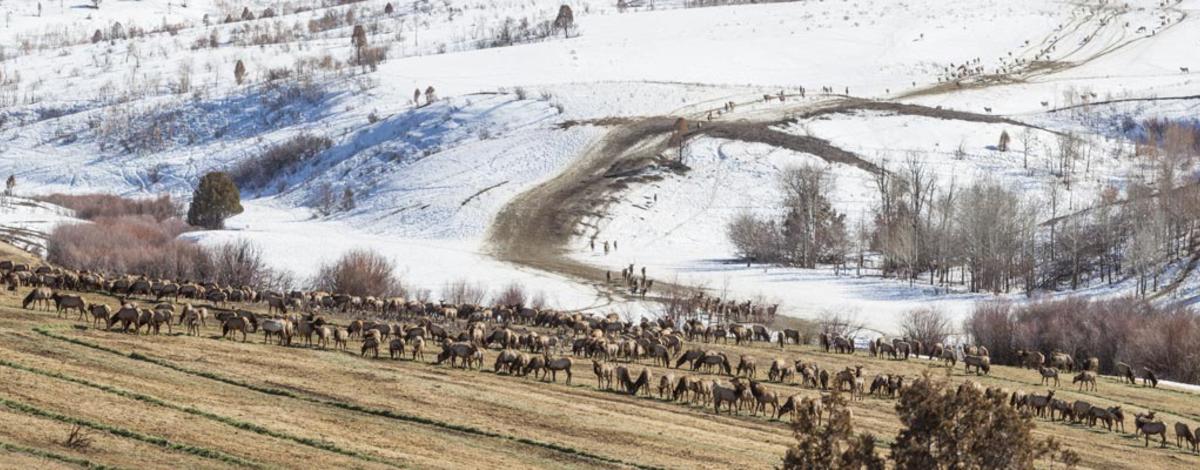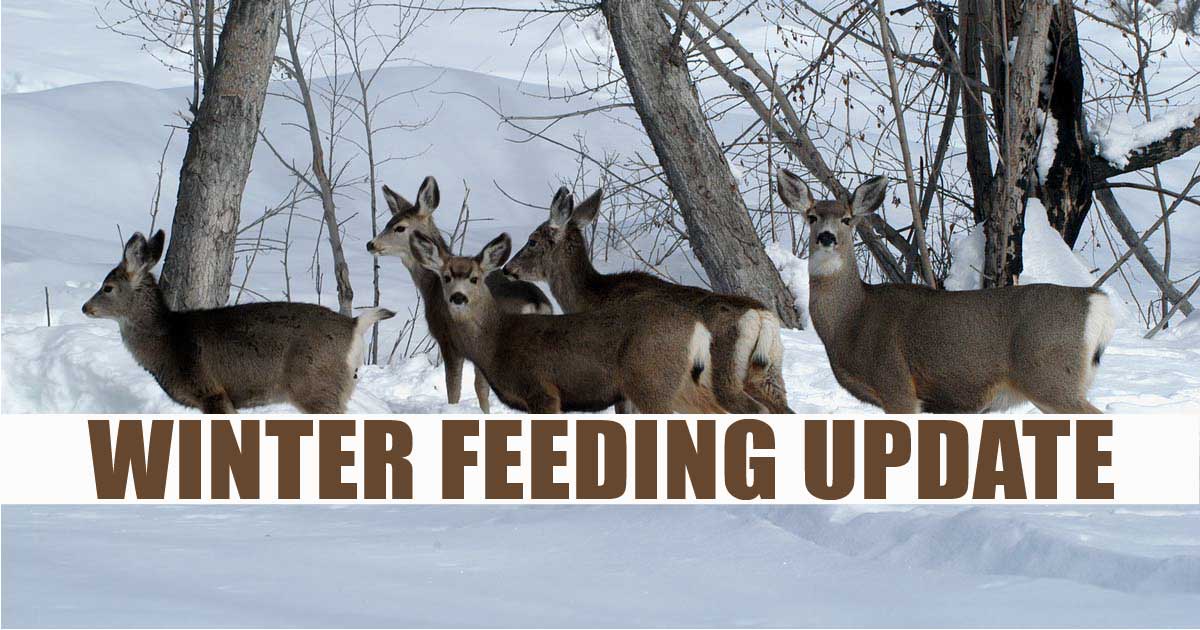Fish and Game looks to natural forage to sustain big game populations. But when emergency conditions exist, winter feeding becomes an option. Four main conditions that can trigger Fish and Game winter feeding are:
Private property damage
Learn more
Public safety concern
Excessively harsh winter conditions
Significant loss of winter forage
The agency’s policy and actions have evolved through decades of experience with winter feeding and is done with the best interest of Idaho’s big game populations.
After the devastating winters in the late 1990s, the Idaho Fish and Game Commission developed a policy and process to guide the agency’s decisions to feed or not to feed big game animals. The policy was updated to include the potential for disease, such as chronic wasting disease, as a consideration to feed or not feed.



